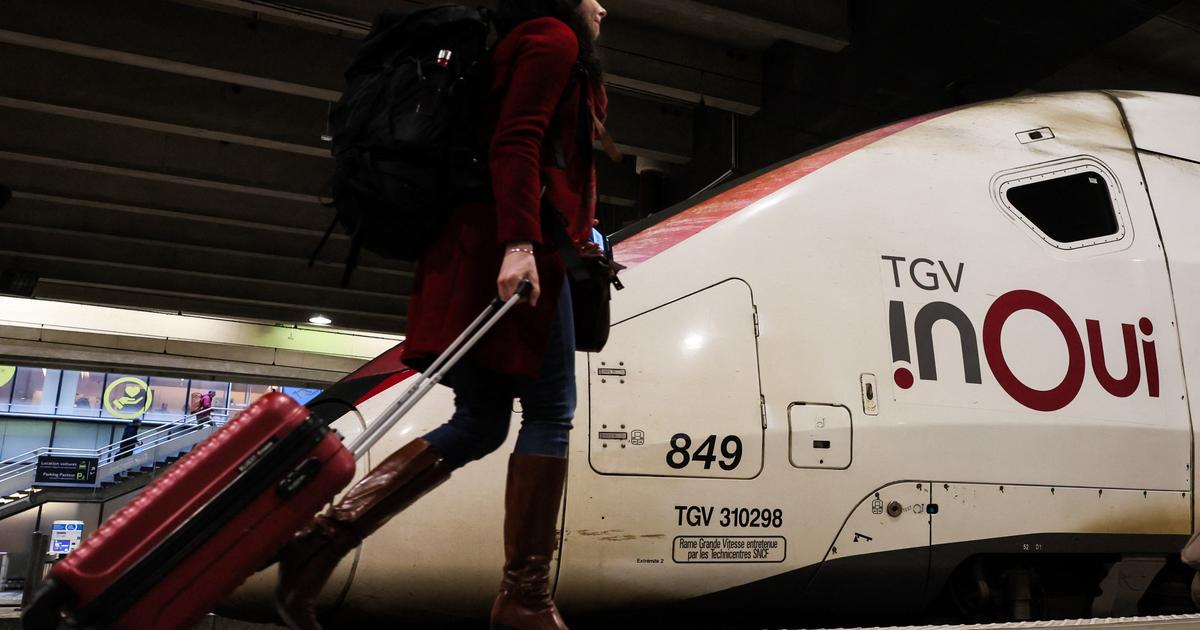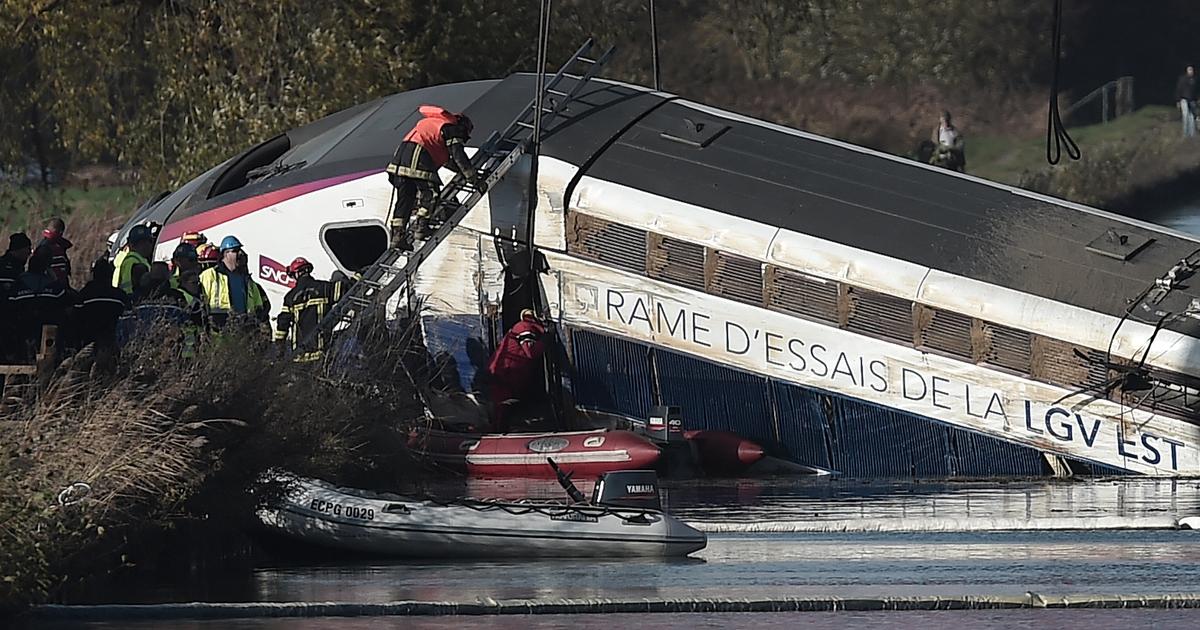On July 6, 2013, at 1:15 a.m., a train of 72 tank cars filled with highly flammable petroleum entered the small town of Lac-Mégantic, in Quebec, at 100 km / h, then derailed.
The explosion kills 47 people.
The driver had however parked the locomotives upstream with the regulatory brakes, before going to rest in a hotel for the night.
But a fire in the lead locomotive caused an intervention by the firefighters who, by extinguishing the fire and closing the circuit breakers, cut off the air supply to the pneumatic brakes.
The convoy has therefore started moving again, very slowly ... The only emergency brake, poorly connected, will not work.
To read also
One hundred thousand years,
a comic strip to denounce the "scandal" of nuclear waste in Bure
The comic strip
Mégantic, un train dans la nuit,
published by Écosociété and selected in Angoulême (in the running for the new Éco-Fauve Raja prize), shows that the disaster, totally predictable, was the result of a succession of irresponsible decisions aimed at making savings in defiance of any elementary notion of security. With the help of the Canadian government, the railway groups have drastically reduced their number of employees, limited inspectors' checks, increased the weight and speed of trains running on unmaintained rails ... In the case of the convoy in Lac-Mégantic, too fragile DOT-111 tanks were used by falsifying petroleum identification papers (from PGI, the most explosive, to PGIII,
“not dangerous”
).
“I bought a model of the GE locomotive that I could draw from all angles,”
explains Christian Quesnel, anxious to represent the train with realism. Anne-Marie Saint-Cerny & Christian Quesnel / Ecosociety
“Even before the fire was extinguished, both government and industry barons blamed one man for the tragedy, the driver of the train, the last in the chain, who did not apply enough brakes. But who had allowed, in Canada, that a man alone, exhausted, to drive a train of 72 bombs, in the mountains, on broken rails? ”,
Denounces Anne-Marie Saint-Cerny, author in 2018 of an essay titled
Megantic: an announced tragedy,
soon to be adapted into a TV series by Philippe Falardeau (
Monsieur Lazhar
).
Thomas Harding, the conductor of the train, was implicated before being acquitted by a jury.
"Comics made it possible to bring back faces, haggard eyes, to break the wall of cold statistics"
Anne-Marie Saint-Cerny
Alongside the victims for eight years, the activist investigator now wishes to reach the general public with this comic.
“Comics require conciseness, to strip the web of events so that it appears in all its light.
It also made it possible to bring back faces, haggard eyes, to break the wall of cold statistics.
I could bring back the emotion that the factual investigation of the essay forbade me ", she
explains to
Le Figaro,
adding that she wishes to give the drama a
" universal dimension "
, like the tragedies of Bhopal and the Rana Plaza.
The explosion is represented in three spreads
Access the slideshow (3)
To graphically stage her story, Anne-Marie Saint-Cerny called on Christian Quesnel, a designer keen to put in place storytelling strategies that are both inventive and respectful of the victims. The explosion, for example, is depicted with modesty.
“I wanted it to be silent so as to focus on the victims without showing any charred bodies. I used what only the comic strip can deploy as narration, iconic solidarity, to create a strong emotion in the reader,
details Christian Quesnel.
This is how four boxes each representing four people turn into four black boxes when turning the page. The reader understands everything without seeing anything front-end. This is the part of which I am most proud. ”
“Playing with watercolor on papers of various textures and colors is one of the most fun parts of my work.
I rediscover the pleasures of childhood, of enchantment, when I see the colors appear and mix ”
Christian Quesnel
Christian Quesnel works mainly in traditional.
“Playing with watercolor on papers of various textures and colors is one of the most fun parts of my work.
I find there the pleasures of childhood, of enchantment, when I see the colors appear and mix,
explains the painter.
Everything that is speech bubble, text, layout of the board is done digitally.
Sometimes, I put handwritten or iconographic elements on the computer but without altering the organic aspect of the plate. ”
“'You gave me the best gift, you gave me back my daughter,” whispered the father of Kathy, who died at the age of 25, ”
says Anne-Marie Saint-Cerny, overwhelmed by the welcome that the families received. of victims reserved for comics. Anne-Marie Saint-Cerny & Christian Quesnel / Ecosociety
In order to meet the inhabitants and
"feel"
the atmosphere of the place, Christian Quesnel went to Lac-Mégantic on two occasions.
“Reproducing the city center as it was before the disaster affected many Méganticois,
specifies the designer.
One of the survivors said to me: “You can look us straight in the eye without embarrassment.” I was extremely relieved, it must be admitted ... "
The artist also relied heavily on the visual documentation provided by Anne-Marie Saint-Cerny:
" The documentary fragment that marked me the most is a short video of a young woman, Kathy Clusiault, a few weeks before her death, where she sang a song for her father
.
This video moved me deeply and Kathy remained at the heart of my thoughts when I designed the album. ”
“Doing this comic terrified me, in that I feared more than anything to hurt the relatives of the victims again,”
adds Anne-Marie Saint-Cerny.
A single person from Mégantic destroyed by the work would have been an unacceptable tragedy.
My first duty was not to cause harm to those who are already suffering. ”
BD box
This double-plate was made with watercolor and India ink on cardboard.
Anne-Marie Saint-Cerny & Christian Quesnel / Ecosociety
This sequence takes place immediately after the disaster, in the heart of Lac-Mégantic.
"The first box shows a certain distance from the explosion where the sky is completely illuminated in red,"
describes Christian Quesnel.
The two boxes at the top of the double-board are general views of the action, designed both to situate the reader in the action but also to allow the images to breathe because what is represented there may seem… suffocating ! "
For the designer, colors are an integral part of the narration:
“Red has become emblematic of a key moment in the story, the explosion. I used this color beforehand to create in the reader an anticipation of the shock to accentuate the apprehension of the fateful moment. In the second part [of the comic], it is a matter of distributing a few red boxes in certain places to remind people of the explosion and to constitute windows illustrating the post-traumatic shock. In addition to this “star color”, I distributed dark but soft colors to counterpoint the shock but also to soothe the reading experience. ”
“It is very difficult to put oneself in [Tom Harding's] shoes but reality, for a few moments, must have seemed intangible, timeless, hence the need to try to catch up with things, to help by pulling unexploded wagons at the risk of his life "
Christian Quesnel
The bottom boxes focus on the drama experienced by Tom Harding. Contacted by telephone, the train driver realizes that it is "his" train that caused the disaster.
"He thinks of death, of the deer struck earlier on the journey which, in the reader's mind, becomes a transposition of the victims,"
continues the designer
. It is very difficult to put yourself in this person's shoes but the real, for a few moments, must have seemed intangible, timeless, hence the need to try to make up for things, to help by pulling the wagons. exploded at the risk of his life. It is this shift in Harding's life that I have tried to illustrate in this double-page. "
"The idea of deer comes from an interview with Monsieur Lafontaine, at the end of the first part, who has lost many relatives and who compares their innocence with the death of the deer:" It's like when you shoot a deer , he looks at you with a smile and then you shoot him a bullet. He died right there… ”. Anne-Marie also mentioned to me that train conductors were afraid of hitting deer with their locomotives but that it happened regularly. It is from these two elements that I decided to represent Harding's awareness, by transposing the victims into the deer. The emotion that I wanted the reader to experience was then freed from any repulsion that a representation of charred bodies would have engendered. ”
“This double-board is an exact reconstruction of the scene from the verbatim of the interview between Tom Harding and Richard Labrie. I remember Anne-Marie and I discussing Tom Harding's words at length - “Holy fuck! Tabarnak de tabarnak! ” - which I cared about. Anne-Marie wanted to remove them to preserve the dignified image of man and preserve the universal scope of the story, but I found that that anchored the story in Quebec for readers from elsewhere in the world. Moreover, it is quite possible that the book will be translated into English and this is a point that I asked to preserve as is even in the English edition! ”
"A nauseating mixture of ignorance, incompetence and moral corruption today animates almost the whole of politics"
Anne-Marie Saint-Cerny
Tom Harding was also the only person prosecuted.
“I don't like to use the word 'system', which denies the individual responsibility of elected officials, senior officials and other officials. Nevertheless, when the tragedy is immense, this system organizes an extreme defense to preserve its functioning, its premises. Even in democratic Canada. Hence this eagerness, from the first hours, to make a scapegoat, the train conductor,
analyzes Anne-Marie Saint-Cerny.
No citizen should understand that shareholders' profit takes precedence over the right to life, health and security. This is the reason why there will be no official commission of inquiry. However, it is the only mission of elected officials, to whom we delegate our destiny, to act as a buffer between the greed of the companies and us. ”
A civil action against the Canadian Pacific Railway is in progress. Tom Harding was called to the bar.
"A man of remarkable uprightness, he is today a broken man who has lost everything, family, house… He testified with great dignity, supported by several people from Mégantic,"
notes the author.
This man, Harding, alone, with no lawyer and no money, faced the greatest litigant in Canada in a ruthless cross-examination. We remain suspended at the end of this appeal. Beyond the few crumbs that the victims could obtain, it is the response of the Judiciary as a remedy for the victims that is at stake. I have not personally known any example where the victims have obtained fair, legal or monetary compensation. "
So far, some $ 111 million has been paid to the victims and their families as part of an out-of-court settlement ...









/cloudfront-eu-central-1.images.arcpublishing.com/prisa/2C5HI6YHNFHDLJSBNWHOIAS2AE.jpeg)



